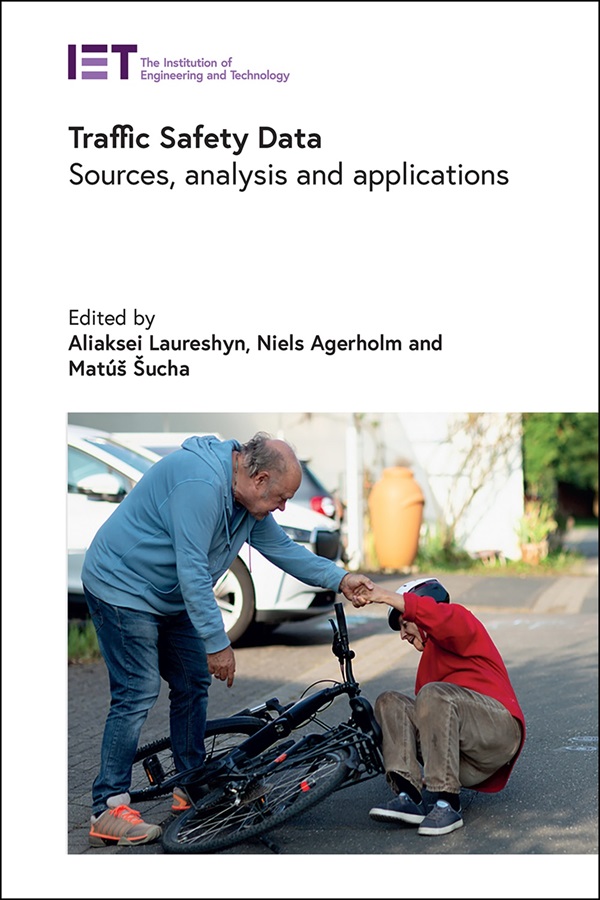- Agricultural Engineering and Technology
- Applied Physics
- Built Environment
- Computing and Networks
- Control, Robotics and Sensors
- Electrical Regulations
- Electromagnetics and Radar
- Energy Engineering
- Healthcare Technologies
- History and Management of Technology
- IET Codes and Guidance
- Manufacturing
- Materials, Circuits and Devices
- Model Forms
- Security
- Telecommunications
- Transportation

Traffic Safety Data
Sources, analysis and applications
Edited by Aliaksei Laureshyn, Niels Agerholm, Matúš Šucha
Traffic fatalities decrease in most high-income countries, though it is still a long journey to reach the Vision Zero target. The trend is quite the opposite in low- and middle-income countries, where road casualty numbers stagnate at best. In both contexts, however, access to meaningful and reliable data is crucial for developing efficient traffic safety policies and, ultimately, saving lives on streets and roads.
There can be significant limitations with available accident data, meaning finding alternative sources of relevant information is increasingly important. Besides the traditional police records, there are many other data sources that can be used as a complement or an alternative. 'Triangulation' of different data types usually leads to important insights, both related to the traffic safety problems at hands, and to how much trust we can put into a single data source.
This book covers the different data types that can be collected and used for monitoring, analysing, and improving road safety, including chapters on police records and accident modelling, healthcare system records, self-reporting of accidents, data from insurance companies, and more. Not the least, significant space is given to the pro-active methods for traffic safety assessment. The book also looks at the legal and ethical issues around collecting and using road safety data.
This book provides a wide and up-to-date perspective on relevant traffic safety data, helping to broaden the horizons for safety experts and also to promote a more knowledge- and data-based approach to traffic safety management.
About the Editors
Aliaksei Laureshyn is an associate professor in traffic safety at Lund University, Sweden. His core competence is within theory and practical application of proactive (non-accident based) methods in safety analysis. Other research interests cover emerging technologies for data collection in traffic, safety of vulnerable road users, and policy and practice within traffic safety management, both in mature contexts and in low-and middle-income countries. He is a passionate educator about the Safe System approach to traffic safety, giving lectures and courses on this subject in different arenas and in different countries. Since 2021, he has acted as the editor-in-chief of the Traffic Safety Research journal (2004-3082).
Niels Agerholm is the executive manager for Road Sector & Authority at The Danish Road Directorate. His departments work with traffic planning, road administration, road design, road freight transport and legal support. He holds a Master's Degree and a Doctoral Degree from Aalborg University in Denmark. He has worked with traffic safety research for 14 years, but since 2020, he has worked for the Danish Road Directorate.
Matúš Šucha is a Czech traffic psychologist and professor of traffic psychology at Palacky University in Olomouc. His professional focus is on the field of traffic psychology, specifically on issues of mobility, sustainability and safety. He is a forensic expert and a Europsy mentor in the field of traffic psychology. He is the author of many publications on the human factor in transport. He is an active member of many prestigious international organizations, among others, vice-president of ICTCT - International Co-operation on theories and concepts in traffic safety.
Publication Year: 2024
Pages: 367
ISBN-13: 978-1-83953-045-6
Format: HBK
